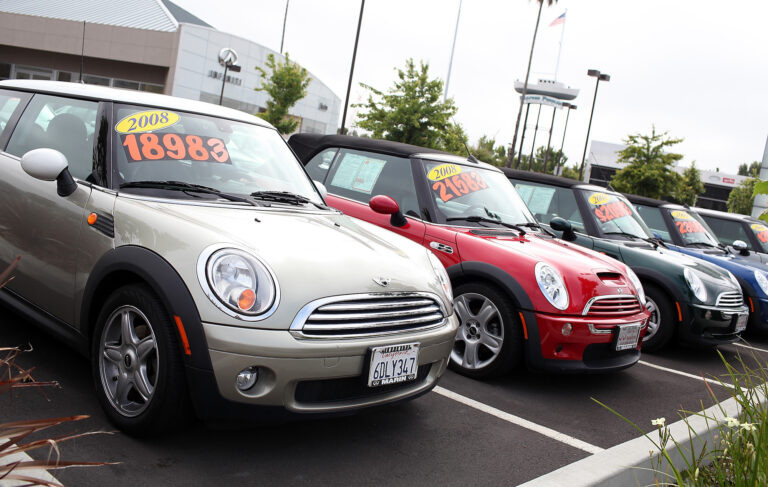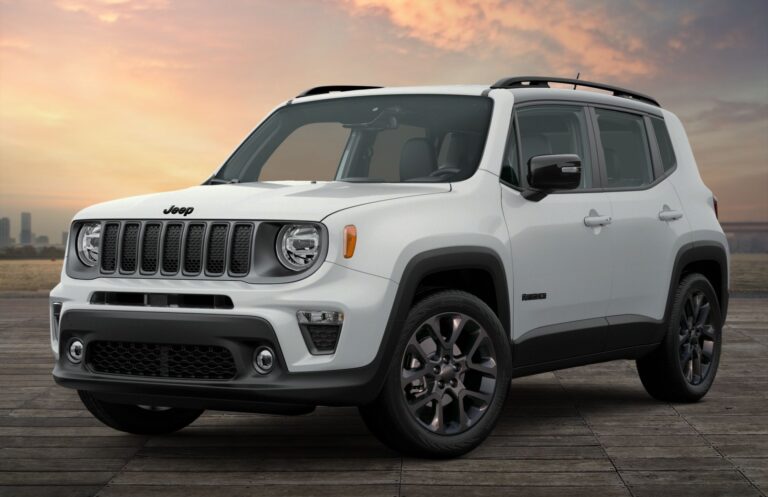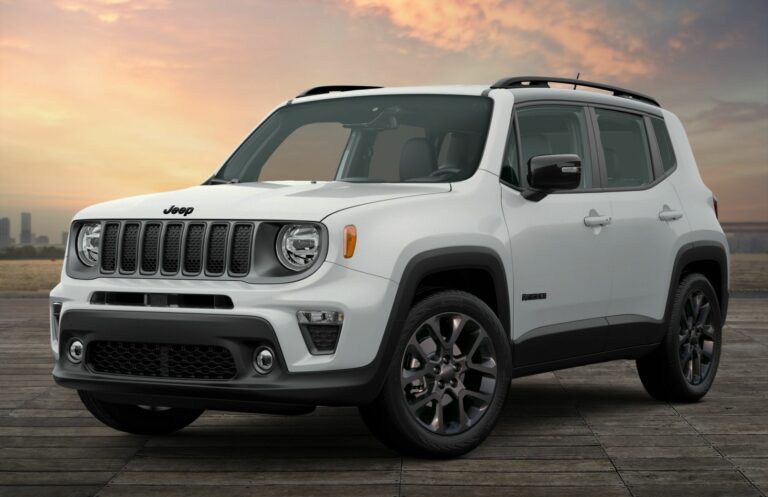Jeep Cherokee KJ For Sale: Your Comprehensive Guide to Buying, Selling, and Understanding This Iconic Off-Roader
Jeep Cherokee KJ For Sale: Your Comprehensive Guide to Buying, Selling, and Understanding This Iconic Off-Roader jeeps.truckstrend.com
The automotive landscape is constantly evolving, yet certain vehicles carve out a timeless niche, maintaining their appeal long after their production runs. Among these is the Jeep Cherokee KJ, known as the Jeep Liberty in North America, a compact SUV produced from 2002 to 2007. More than just a utility vehicle, the KJ series represents a significant chapter in Jeep’s history, being the first Jeep to utilize an independent front suspension since the Wagoneer, and offering a unique blend of urban usability with the legendary off-road prowess the brand is renowned for.
For those in the market for an affordable, capable, and distinctive 4×4, or for current owners looking to pass on their beloved rig, understanding the nuances of the Jeep Cherokee KJ for sale market is paramount. This comprehensive guide will navigate you through everything you need to know, from its defining features and benefits to critical considerations, practical buying and selling tips, and what to expect in terms of pricing and common queries.
Jeep Cherokee KJ For Sale: Your Comprehensive Guide to Buying, Selling, and Understanding This Iconic Off-Roader
Understanding the Jeep Cherokee KJ: A Brief Overview
The Jeep Cherokee KJ, or Liberty, was designed to replace the popular XJ Cherokee, a daunting task given the XJ’s cult following. Chrysler opted for a more rounded, contemporary design and introduced several engineering changes, most notably the independent front suspension. While initially controversial among some purists, this design offered improved on-road ride comfort and handling, making the KJ a more versatile daily driver without sacrificing its off-road credentials.
Key Characteristics:
- Production Years: 2002-2007
- Body Style: 4-door compact SUV
- Chassis: Unibody construction
- Engine Options:

- 3.7L PowerTech V6 (Gasoline): The most common engine, offering a good balance of power and reliability for most applications.
- 2.4L PowerTech I4 (Gasoline): Less common, primarily available in 2WD models, and often considered underpowered for the vehicle’s weight.
- 2.8L VM Motori CRD (Common Rail Diesel): Highly sought after in certain markets (especially outside North America, but also available in the US from 2005-2006), known for its impressive low-end torque, fuel efficiency, and towing capability.
- Transmission Options: 5-speed manual (less common) and 4-speed automatic (most common).
- 4×4 Systems:
- Command-Trac: Part-time 4WD system, ideal for off-road use.
- Selec-Trac: Full-time 4WD system, allowing for use on pavement, offering more flexibility.
- Trim Levels: Sport, Limited, Renegade, Rocky Mountain Edition, and more, each offering different levels of features and aesthetics.
The KJ’s blend of size, capability, and available powertrain options, particularly the robust CRD, makes it a compelling choice for those seeking an affordable entry into the 4×4 world or a capable daily driver with weekend warrior potential.
Why Buy a Jeep Cherokee KJ? Benefits and Appeal
Despite its age, the Jeep Cherokee KJ continues to attract a dedicated following. Its enduring appeal stems from several key advantages:
- Cost-Effectiveness: One of the most significant benefits is its affordability on the used market. KJs offer a lot of bang for your buck, providing genuine 4×4 capability at a fraction of the cost of newer SUVs.
- True Off-Road Capability: Unlike many modern "soft-roaders," the KJ Cherokee is a true Jeep. With solid axle options, low-range transfer cases (Command-Trac and Selec-Trac), decent ground clearance, and robust construction, it can tackle challenging trails with confidence.
- Versatility: It excels as a daily commuter, a family hauler, and a weekend adventure vehicle. The cargo space is ample for its class, and with the right engine, it can even tow small trailers or boats.
- Diesel Power (CRD Models): The 2.8L CRD engine is a standout. Its impressive torque makes off-roading effortless and towing manageable, while its fuel economy (especially compared to the V6) can be a significant draw for long-distance drivers.
- Moddability and Aftermarket Support: The KJ platform has a strong aftermarket presence. Owners can easily find lift kits, upgraded suspension components, heavy-duty bumpers, skid plates, roof racks, and various performance enhancements to customize their vehicle for specific needs.
- Compact Size: Its relatively compact footprint makes it more maneuverable in urban environments and on tight trails compared to larger full-size SUVs.
Key Considerations Before Buying a KJ Cherokee
While the KJ offers excellent value, it’s a used vehicle, and like any older car, it comes with its own set of potential quirks and common issues. Thorough inspection and research are crucial.
- Rust: This is perhaps the most significant concern, especially in regions that use road salt. Pay close attention to the frame (particularly around the control arm mounts), rocker panels, wheel wells, and subframe. Surface rust is common, but advanced structural rust can be a deal-breaker.
- Maintenance History (Especially CRD): A comprehensive service history is vital. For CRD models, specific attention should be paid to timing belt replacements (every 100,000 km or 60,000 miles), turbocharger health, EGR system condition, and fuel filter housing leaks. Neglected CRDs can be very expensive to repair.
- Engine Specifics:
- 3.7L V6: Generally reliable, but check for oil leaks (especially valve covers), ticking noises (often lifters or rocker arms), and signs of overheating.
- 2.8L CRD: While robust, look for excessive black smoke (turbo/injector issues), white smoke (head gasket), low power, and any signs of coolant or oil leaks around the turbo or intercooler pipes.
- 2.4L I4: Less common, but ensure it’s not overly sluggish or burning oil.
- Transmission: Check for smooth shifts, shuddering, or delayed engagement. Automatic transmission fluid should be reddish and not smell burnt.
- Suspension and Steering: Common wear items include ball joints (upper and lower), control arm bushings, tie rod ends, and wheel bearings. Listen for clunks, squeaks, or excessive play in the steering.
- 4WD System: Test all 4WD modes (2WD, 4-Hi, 4-Lo) to ensure smooth engagement and disengagement. Listen for grinding or clunking noises.
- Electrical Issues: While not rampant, check all power windows, locks, lights, and dashboard warning indicators.
- Interior Wear: Inspect seats, headliner, and plastic trim for excessive wear, tears, or broken components.
Tips for Finding and Inspecting a KJ Cherokee For Sale
Finding the right KJ requires patience and diligence. Here’s how to approach the search:
- Where to Look:
- Online Marketplaces: Facebook Marketplace, Craigslist, Autotrader, Cars.com, and local classifieds are good starting points.
- Specialized Forums & Groups: Jeep-specific forums (e.g., JeepKJ.com, LostJeeps.com) and Facebook groups often have passionate owners selling well-maintained KJs.
- Local Dealerships: Less common for KJs, but sometimes a trade-in might pop up.
- Initial Screening: Don’t hesitate to ask detailed questions via email or phone before seeing the vehicle in person. Inquire about maintenance history, any known issues, and why they are selling. Request additional photos or even a video walk-around.
- Pre-Purchase Inspection (PPI): This is non-negotiable. Have a trusted mechanic, preferably one familiar with Jeeps (and especially CRD engines if you’re looking at one), perform a thorough inspection. This small investment can save you thousands in future repairs.
- Test Drive:
- Drive the vehicle at various speeds, including highway speeds.
- Test the brakes: ensure they are firm and don’t pull to one side.
- Engage all 4WD modes (on a loose surface if possible for part-time 4WD).
- Listen for any unusual noises: clunks, squeaks, grinding, whining.
- Check all electrical components: lights, radio, HVAC, power windows, wipers.
- Documentation: Always ask for service records. Verify the title is clean and matches the VIN. Consider running a vehicle history report (CarFax, AutoCheck) to check for accidents, salvage titles, or odometer discrepancies.
- Negotiation: Research market prices for similar KJs in your area. Be prepared to walk away if the seller isn’t reasonable or if the vehicle has too many red flags.
Selling Your Jeep Cherokee KJ: Maximizing Value
If you’re an owner looking to sell your KJ, presenting it in the best possible light can significantly impact its selling price and speed.
- Thorough Cleaning and Detailing: A clean car sells better. Detail the interior, wash and wax the exterior, clean the engine bay, and ensure tires are shined.
- Address Minor Issues: Fix small, inexpensive problems like burnt-out light bulbs, minor fluid leaks, or a missing trim piece. These small fixes can give a buyer confidence that the vehicle has been well-cared for.
- Gather Maintenance Records: A complete service history adds tremendous value and transparency. Organize all receipts and documentation.
- High-Quality Photography: Take clear, well-lit photos from multiple angles (interior, exterior, engine bay, trunk). Highlight any desirable features or modifications.
- Honest and Detailed Description: Be upfront about the vehicle’s condition, including any known flaws. Detail its features, maintenance history, and why you loved owning it. Honesty builds trust.
- Realistic Pricing: Research what similar KJs are selling for in your area. Factor in mileage, condition, engine type (CRD will command more), and any desirable modifications. Be prepared to negotiate.
- Effective Marketing: List your KJ on popular online marketplaces, local classifieds, and consider specialized Jeep forums or groups where enthusiasts are actively looking.
- Safety First: When meeting potential buyers, choose a public, well-lit location. Avoid sharing personal information until necessary.
Common Modifications and Upgrades
The Jeep Cherokee KJ is a popular platform for customization, enhancing both its aesthetics and off-road capabilities.
- Lift Kits: Ranging from mild 2-inch lifts for tire clearance to more aggressive 4-inch lifts for serious off-roading. Popular brands include Old Man Emu (OME) and Frankenlift.
- Larger Tires: To improve ground clearance and traction. Ensure they fit with your lift and don’t rub.
- Aftermarket Bumpers & Skid Plates: For improved approach/departure angles and protection from trail hazards.
- Roof Racks: For carrying extra gear, rooftop tents, or kayaks.
- Off-Road Lighting: LED light bars and auxiliary lights for improved visibility at night.
- Performance Upgrades (CRD): ECU tunes, upgraded intercoolers, and exhaust systems can significantly boost power and torque on diesel models.
Jeep Cherokee KJ For Sale: Estimated Price Table
Prices for a used Jeep Cherokee KJ can vary widely based on location, specific condition, mileage, maintenance history, engine type, and modifications. The 2.8L CRD models generally command a higher premium due to their desirability.
| Year | Trim Level | Engine Type | Mileage Range (km) | Condition | Estimated Price Range (USD) | Notes |
|---|---|---|---|---|---|---|
| 2002 | Sport | 3.7L V6 | 200,000 – 300,000+ | Fair | $3,000 – $5,000 | Higher mileage, potential for more wear and tear. |
| 2003 | Limited | 3.7L V6 | 180,000 – 250,000 | Good | $4,500 – $7,000 | More creature comforts, good daily driver potential. |
| 2004 | Renegade | 3.7L V6 | 150,000 – 220,000 | Excellent | $6,000 – $9,000 | Distinctive exterior styling, often well-maintained by enthusiasts. |
| 2005 | Sport CRD | 2.8L CRD | 180,000 – 280,000 | Good | $6,500 – $10,000 | High demand, inspect maintenance records meticulously for CRD. |
| 2006 | Limited CRD | 2.8L CRD | 150,000 – 220,000 | Excellent | $8,000 – $12,000+ | Top-tier diesel model, premium features, can command higher prices. |
| 2007 | Sport/Limited | 3.7L V6 | 120,000 – 180,000 | Excellent | $7,000 – $10,000 | Final production year, often has lower mileage and better condition. |
| Any | Highly Modded | V6/CRD | Varies | Varies | $8,000 – $15,000+ | Value depends heavily on quality of modifications and base vehicle. |
Note: These prices are approximate and can fluctuate based on regional market conditions, specific vehicle history (e.g., accident history), and the seller’s urgency. Always conduct your own local market research.
Frequently Asked Questions (FAQ) about the Jeep Cherokee KJ
Q1: Is the Jeep Cherokee KJ a good off-road vehicle?
A1: Yes, absolutely. With its available low-range transfer cases (Command-Trac and Selec-Trac), decent ground clearance, and robust construction, the KJ is a very capable off-roader for its class, especially when mildly modified with a lift and aggressive tires.
Q2: What’s the main difference between the 3.7L V6 and 2.8L CRD engines?
A2: The 3.7L V6 is a gasoline engine, offering good all-around performance and general reliability. The 2.8L CRD (diesel) offers significantly more low-end torque, better fuel economy, and is often preferred for towing and serious off-roading, but typically requires more specific and potentially more expensive maintenance.
Q3: Are there common problems with the KJ Cherokee I should be aware of?
A3: Common issues include rust (especially on the frame and body mounts), worn suspension components (ball joints, bushings), and for CRD models, potential issues with the EGR system, turbocharger, and timing belt maintenance if neglected.
Q4: What should I look for when buying a used KJ?
A4: Prioritize a thorough inspection for rust, check all fluids, test the 4WD system, listen for unusual noises during a test drive, and obtain a pre-purchase inspection from a trusted mechanic. Always ask for maintenance records.
Q5: Can I lift a KJ Cherokee?
A5: Yes, the KJ is a popular platform for lift kits. Common lifts range from 2 to 4 inches, allowing for larger tires and improved off-road performance. Many aftermarket options are available.
Q6: Is the KJ Cherokee expensive to maintain?
A6: Routine maintenance for the 3.7L V6 is comparable to other SUVs of its era. The 2.8L CRD can be more expensive if specialized parts or labor are needed, particularly for major services like timing belt replacement or turbo issues. Diligent preventative maintenance is key for both.
Q7: How reliable is the Jeep Cherokee KJ?
A7: When properly maintained, both engine options can be quite reliable. The 3.7L V6 is known for its durability, and the CRD, despite its specific maintenance needs, is a robust engine. Reliability largely depends on the vehicle’s history and how well the previous owner cared for it.
Conclusion
The Jeep Cherokee KJ, or Liberty, remains a compelling choice in the used SUV market. It offers an attractive combination of affordability, distinctive styling, and genuine off-road capability that few vehicles in its price range can match. Whether you’re a first-time 4×4 owner, an experienced off-roader seeking a nimble trail rig, or simply looking for a versatile daily driver, the KJ has something to offer.
However, like any used vehicle, thorough research, diligent inspection, and an understanding of its specific characteristics are paramount. By following the advice in this guide, you can confidently navigate the "Jeep Cherokee KJ For Sale" market, ensuring you either find the perfect adventure companion or successfully pass your well-loved rig on to its next deserving owner. With the right care, a KJ Cherokee can provide many more years of reliable service and memorable adventures.




